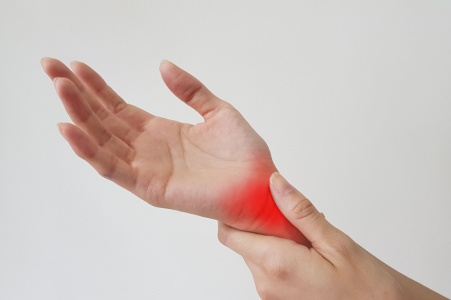
Carpal tunnel syndrome develops when the median nerve, which runs from the forearm into the hand, becomes compressed within the narrow passageway of the wrist. This condition often leads to numbness, tingling, or weakness in the hand and fingers, making daily tasks more difficult. The discomfort may begin gradually, starting with mild sensations in the thumb, index, or middle finger, but can progress into persistent pain or reduced grip strength. Repetitive hand motions and prolonged wrist positioning may contribute to the strain placed on the nerve. Over time, the muscles at the base of the thumb may weaken if the condition is not addressed. A chiropractor can evaluate the alignment of the wrist, elbow, and spine to determine where pressure on the nerve may be occurring and use gentle adjustments to improve mobility and reduce nerve irritation. If you are suffering from symptoms of carpal tunnel syndrome, it is suggested that you make an appointment with a chiropractor for an exam and treatment options.
Carpal Tunnel Syndrome
Carpal tunnel syndrome, or CTS, is a condition caused by compression of the median nerve, which runs through the carpal tunnel in the wrist. This tunnel is a narrow passageway surrounded by bones and ligaments, and when it becomes compressed or inflamed, it can put pressure on the nerve. Symptoms of CTS include tingling, numbness, weakness, and pain in the hand and fingers, often making simple tasks difficult and uncomfortable.
Chiropractic care offers a non-invasive approach to managing CTS by addressing alignment and reducing nerve pressure. Chiropractors start by evaluating the wrist, elbow, and even the cervical spine or neck, as misalignments in these areas can contribute to nerve compression in the wrist. Through gentle adjustments, chiropractors can improve the alignment of the wrist and spine, helping to reduce the pressure on the median nerve.
In addition to adjustments, chiropractors may use soft tissue therapy, such as stretching and myofascial release, to reduce inflammation surrounding the wrist and enhance mobility.
Why Consider Chiropractic for CTS?
Chiropractic care can provide lasting relief by targeting the root causes of CTS, reducing pain, and promoting long-term hand and wrist health.
Can Chiropractic Care Address Repetitive Strain as a Cause of CTS?
Chiropractic care can help manage repetitive strain by improving joint alignment and recommending ergonomic adjustments.
If you have any questions, please feel free to contact our office located in Largo, FL .
